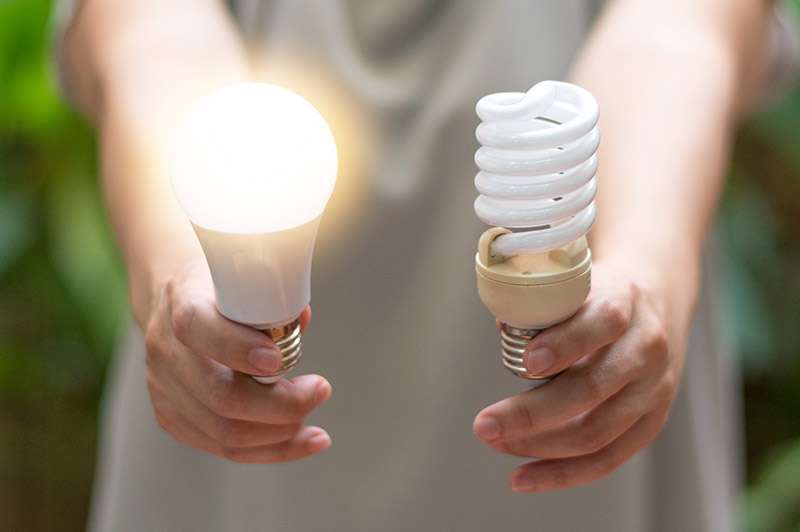Ban on Compact Fluorescent Bulbs

A Timeline of the CFL Ban in the UK and EU
The bans on CFLs and similar fluorescent lighting are being implemented slightly differently in the EU and UK, with each region setting its own deadlines and regulatory frameworks.
UK: In the UK, the ban on CFLs and fluorescent tubes will come into full effect on February 1, 2024. This ban is governed by the Restriction of Hazardous Substances (RoHS) Directive, which specifically prohibits the use of mercury in new lamps. The RoHS Directive aligns with the UK's sustainability goals and removes products that present environmental risks and consume high amounts of energy.
EU: On August 24, 2023, the EU officially banned the production and import of CFLs and other fluorescent bulbs. This action is part of the Ecodesign Directive, a broad policy aimed at reducing energy use across various products and promoting more sustainable alternatives.
Despite these bans, certain specialized fluorescent lamps are exempt, such as T5s and those used in the film, TV, and photography industries.
Why Are CFLs Being Phased Out?
The transition away from CFLs and other fluorescents is driven by concerns over energy efficiency, environmental impact, and health risks.
Energy Consumption: While CFLs were initially favoured for their energy savings over incandescent bulbs, they still fall short when compared to LEDs. LEDs use significantly less energy than CFLs and offer the added benefit of longer life spans, which results in fewer replacements and reduced waste.
Environmental and Health Risks: One of the most pressing reasons for the ban is that CFLs contain trace amounts of mercury, a toxic heavy metal that can be hazardous to both the environment and human health if not disposed of correctly. Mercury contamination can occur if a CFL bulb is broken or improperly discarded, posing risks to the air, soil, and water supply. The shift to LEDs, which are mercury-free, eliminates this risk.
Resource Conservation: The move to eliminate CFLs is also part of a broader push to make consumer products more sustainable. LEDs not only use less electricity but are also recyclable, making them a better choice for conserving resources and reducing environmental waste.
What Is the Ecodesign Directive?
The Ecodesign Directive is a policy initiative by the EU to improve the environmental performance of products, from light bulbs to household appliances. By setting minimum energy efficiency and sustainability standards, the Ecodesign Directive aims to reduce energy consumption across the EU and help meet climate targets. The ban on CFLs is just one example of how the Ecodesign Directive works to phase out products that are not resource-efficient.
What Is the RoHS Directive?
In the UK, the Restriction of Hazardous Substances (RoHS) Directive governs the CFL and fluorescent tube ban. This regulation restricts the use of hazardous substances, like mercury, in electrical and electronic equipment. By banning CFLs under the RoHS Directive, the UK aims to eliminate mercury-related environmental hazards and promote the use of safer, greener products.
Benefits of Switching to LED Lighting
With the ban in place, LED lighting is set to become the primary lighting option for consumers and businesses. Here’s why LEDs are the preferred alternative:
Lower Energy Use: LEDs use up to 80% less energy than CFLs, making them an environmentally friendly choice and helping households and businesses save on electricity costs.
Longer Lifespan: LEDs last much longer than both CFLs and incandescent bulbs, which reduces the need for replacements and generates less waste.
Enhanced Safety: LEDs contain no mercury or other hazardous substances, making them safer to handle and dispose of. This makes LEDs an ideal choice for eco-conscious consumers and businesses alike.
Improved Light Quality: LEDs offer a wide range of colour temperatures and brightness levels, allowing users to customize their lighting to suit different spaces and needs. This versatility is an added advantage for settings where light quality is important, such as workspaces and schools.
How to Safely Dispose of CFLs
With the phase-out of CFLs, it’s important to dispose of any remaining bulbs safely, as they contain small amounts of mercury. Here’s what you can do:
Take to Recycling Facilities: Many local recycling centres accept CFLs and other fluorescent lights as hazardous waste. Some retail stores also offer CFL recycling programs.
Use Caution When Handling: If a CFL breaks, avoid touching the glass directly and air out the room to prevent inhaling any mercury vapor. Place broken CFLs in a sealed container for disposal.
Final Thoughts
The ban on CFLs in the EU and UK is a positive step toward sustainability, safety, and efficiency. LED lighting offers substantial advantages over CFLs, making it the ideal alternative for residential and commercial spaces. As the ban takes full effect, consumers are encouraged to make the switch to LEDs, ensuring their lighting is not only brighter and more efficient but also aligned with the latest environmental standards.
By embracing LED technology, households and businesses will not only contribute to environmental protection but also enjoy a higher quality of light and lower energy bills. The transition away from CFLs reflects a global movement toward more sustainable, safer lighting solutions—one that’s better for people and the planet alike.